In the second and concluding part, Nachiketa deals with the standardisation of Jhumur, the texts, and poets of Jhumur singers. He mentions types of Jhumur and elaborates about a representative poet of this art form. We need to preserve a dying art form. An exclusive for Different Truths.
Jhumur was cultured and cultivated but it is yet to get classical status by a process of standardisation. The urbanisation of Jhumur took place under courtly care to emerge as Darbari Jhumur. The agro-cultural-based Jhumur was practiced for social purposes. Contemporariness have prevailed in current trends. When Karam ends during monsoon session (end of paddy plantation), Jhumur continues in other festivals of autumn till harvesting (up to Badna festival of livestock worship). The clan-based society of ancient Chotonagpur were of peasants and the castes (Kurmi, Kumar, Rajowar, Ghatowal, Maal, Mahali, Bhumij, Dome, Bagdi, etc), had a social practice of group dance, mainly participated by the women. Post chaitanya vakti movements of Vaishnavs had an impact on the constitution of Naam Sankirtan Aakhra or Harimandir based kirtan. Probably conservatism restricted the participation of women later.
Nachnisalia Jhumur form emerged from Nachni dancers copied from Baijis (courtesans) of Lucknow, Varanasi, and Agra
Vadu parab (festival) is associated with Vaduria Jhumur, other forms of Jhumur might be associated with other festivals. Nachnisalia Jhumur form emerged from Nachni dancers copied from Baijis (courtesans) of Lucknow, Varanasi, and Agra. Hybridisation of kirtan with Jhumur is Darbari Jhumur.
Text and Poet of Jhumur Singers
What a long list of Jhumuria (lyricist and singer) of Manbhum– Vaba Pritananda, Ramakrishna Ganguly, Jagat Kabiraj, Binandia Singh, Dina Tanti, Dija Tima, Aakhu Karmakar, Chamu Karmakar, Gourangia Singh, Uday Karmakar , Barajuram, Sristidhar Singa, Handiram Ray, et al. After that the next generation was that of Sindhubala Devi, Salabat Mahato, Mihir Lal Singha Deo, Kuchil Mukhopadhyay, Vabatosh Satpathi, Sunil Mahato, Krittibas Karmakar, Bholanath Mahato, Hazari Prasad Rajowar, Bijoy Mahato, SK Rostom Momin, and others. Subaltern and kings of princely states are there as lyricists too.
A musical trait of such excellence, enriched with colorful emotion and versatile Rasa, nearer to earth and its acceptability was little analysed in history, anthropology, socio-economic studies correlating with genesis, musicology, and culture.
A musical trait of such excellence, enriched with colorful emotion and versatile Rasa, nearer to earth and its acceptability was little analysed in history, anthropology, socio-economic studies correlating with genesis, musicology, and culture. Always studies have been done partiality as the blind men describing an elephant. Anthology of Vaishnav sacred lyrics were compiled by different editors with exclusively stalwart lyricist of Eastern India. Jhumur lyricists like Vabapritananda Ojha, Binanda Singha, Ramkrishna Ganguli, Jagat Kabiraj and other stalwarts have been excluded conventionally. No one can raise questions about their literary values, in Bengal or other states. Jhumur was never been included in the syllabus. Why they excluded the lyrics of Jhumur is not clear. Are these vulgar? Highly erotic? Song of subaltern?
Was it because it was involved with Nachnis (courtesans’ dance)? But, uniquely, despite exclusion and marginalization, Jhumur is alive. Across the world, obscenity (defined period-wise) in literature is the subject of compulsory debate from the era of nascent literature to date.
Jhumur is also not excluded from this debate. Eliot, Rosset, Lawrence or the poet of Hungry generation have utilised expression, reference, and content of a sexual image and written erotically.
Jhumur is also not excluded from this debate. Eliot, Rosset, Lawrence or the poet of Hungry generation have utilised expression, reference, and content of a sexual image and written erotically. Jhumur and its homologous Vaishnavpada are differentiated by the presence or absence “body”. The poetic form of Jhumur, cannot subtract the reference of body. Literature was composed for the masses purportedly in a populist line of work for entertainment except for some exceptions, whereas Vaishnavpadabali were spiritualistic or erotic-spiritualistic. These lyrics were not controlled by any elitist headquarters of literature.
They were rural poets, part of the folklore. The rurality of their compositions was enriched with the essence of soil or their profession of labour class. The essence of Vaishnav poetry here is translated, as for example, “Anyone who faithfully hears or describes the Lord’s playful affairs with the young Gopi’s of Vrindavan will attain the Lord’s pure devotional service. Thus, he will quickly become sober and conquer lust, the disease of the heart.” (Visvanath Chakrabarti Thakur SB 10,33,40 Madhurya Kadambini).
Krishna, the mythic hero of Vrindavan, and his beloved beautiful Gopi is Sri Radhika or Radha with whom Krishna is in love. But for others, Krishnalila (cosmic game) takes place in the human heart.
Krishna is ever young, his miraculous flute, flowing Jamuna, shade of Kadamba tree, and grazing cattle, trees blossom, peacock dancing, bird’s divine orchestra, beautiful cowherds girls (gopis) are summoned by flute; they attend Krishna discarding their honour as their Krishna is more precious and he is the fulfillment of all desire. Krishna, the mythic hero of Vrindavan, and his beloved beautiful Gopi is Sri Radhika or Radha with whom Krishna is in love. But for others, Krishnalila (cosmic game) takes place in the human heart. Gopis’ love for Krishna is the love of man for God.
Jhumur also not only deals with Krishna story and praise of Krishna but is also relevant to explain the burning longing of human love or longings or reflected as primordial, long forgotten lust and pair of separation. The imagery used in Vaishnavpada are imagery of Sanskrit court poetry like lotus, moon, peacock, chokora, bumble bee, whereas jhumur’s imagery are the expression and experience of marginalised people, if the songs are not Radha-krishna centric story, are mainly failed or week imitation of Vaishnava lyricist but when it deals with human experience it is unique and exclusive.
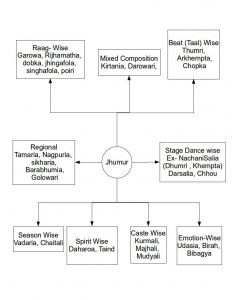
One Songwriter as Representative
Let’s cite the case of Binandia Singh. He was born in a zamindar dynasty of Silly, presently in Jharkhand state, in 1770 A.D. He was one among the eighteen princes. His vernacular was Kurmali. But he composed in Kurmali and Panchpargonia dialects. He was Vaishnavite with hermit-like attitude. His favorite instrument was Ektara. Many sagas are there about him. History tells his suicidal death. His last will was not to cremation by fire but burial with his Ektara. That was done.
His lyrics were based on Radhakrishna storyline and Ramayana, mainly incorporated with Vaduria Jhumur music. He was a folk singer, possibly. His works were compiled by one Upendra Narayan Singha of that dynasty.
His lyrics were based on Radhakrishna storyline and Ramayana, mainly incorporated with Vaduria Jhumur music. He was a folk singer, possibly. His works were compiled by one Upendra Narayan Singha of that dynasty. The anthology was named as Taalmanjari of Chotonagpur and Aadi Jhumur Sangeet. Probably he was influenced by Barajuram’s lyrics.
Jhumur of Binandia Singh
1 Jamuna kinare ban, taha giri gobardhan…
The forest-side of Yamuna (river) bank, near Gobardhan hill, where Ram and Kanhu both take care of cows at Brindaban (sacred place of Lord Krishna and Radha).
Cows graze in the greenwood, next to grassland along the lone forest of the beautiful landscape where gentle breeze abound. The cowboy who takes rest under tree-shade of Mango and Jamun remain cool.
Gope and Gopinis worship Lord. Binandiya goes down memory lane.
Aaol basanta thol nahi chito
At the onset of spring, the heart is disquiet. Friend, how much pain to bear?
At the onset of spring, the heart is disquiet. Friend, how much pain to bear?

Dhadaki and Palas sprinkle smile radiant with floral flame. Forest is resurrected with lush greenery. Humming bumblebees fly to collect nectar and are playful. Seeing spring, the departed beloved becomes pale.
Oh, Friend! Binandia is separated from Kala.
Aasara sraban mase ghan baari barase…
During the season of the flooded river, the beloved is away from home. Eyes are tired of waiting.
Earth sodden with rains in Aasar Srabon. Both the banks of the river are filled to the brim and overflowing. Impossible to keep honour as words are not kept. Lover appears as fig flower (hardly seen). During the season of the flooded river, the beloved is away from home. Eyes are tired of waiting.
Binandia says, Radha is grazing cows in the wood, her hair decorated with red marigold.
- Mathura nagare vetoli naagore
On the Jamuna bank, he robbed all milk and curd, while meeting Nagar in Mathura. Ignoring arguments and requests, he pulled up the edge of clothes, broke bangles, churis. Let us return to Nanda‘s residence to lodge complain why he betrayed and molested in a crowded market.
Binandia begged some Dahi (curd).
Ehe Radhe Binodini sunoho bachans
Dear delighted Radha, listen, why are you sentimental and sad? Why shades of pain are seen on your eyes?
Dear delighted Radha, listen, why are you sentimental and sad? Why shades of pain are seen on your eyes? You are the haven of Hari. Let’s go rapidly to meet him to banish the pain of separation near Kunjaban. Tell him your delight and accept the pain as your own.
It is Binandia’s submission.
- Basanta samaye dyuti grihe nai mor brajapati
Lord of Braja is away. My home is dark this spring.
Lord of Braja is away. My home is dark this spring. Different flowers bloom in this honey-filled month. Dear Sakhi, I am impatient. Neem, Nesari, Mango, Siris, Kusum, Jaama are ready with floral wealth. Nectar of flowers spills over, no bumblebee are hovering. Only some Sari birds are humming on flowers. My teary eyes only visualises Shyama’s images.
Jhumur, a vanishing, and a dying art form is dwindling. Let’s save it.
(Concluded)
Photos from the Internet

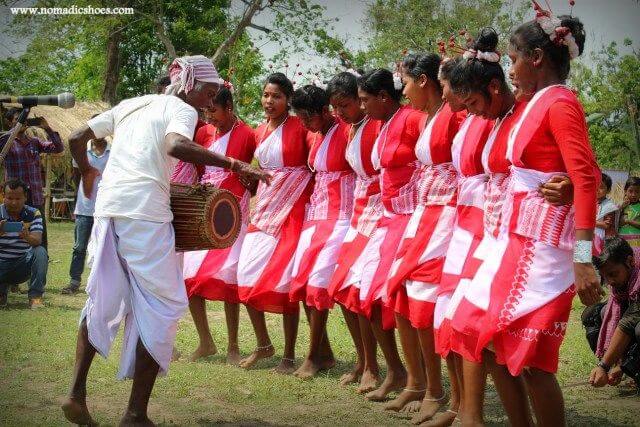


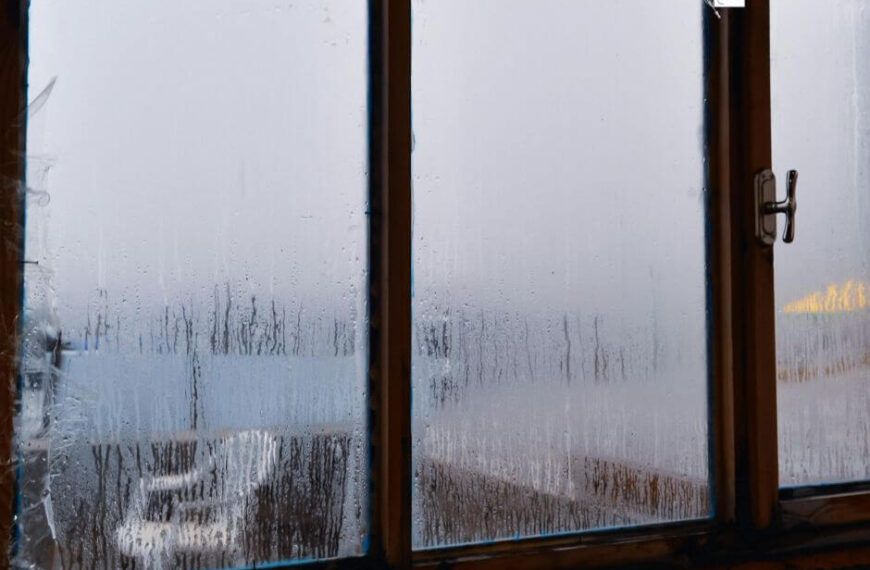
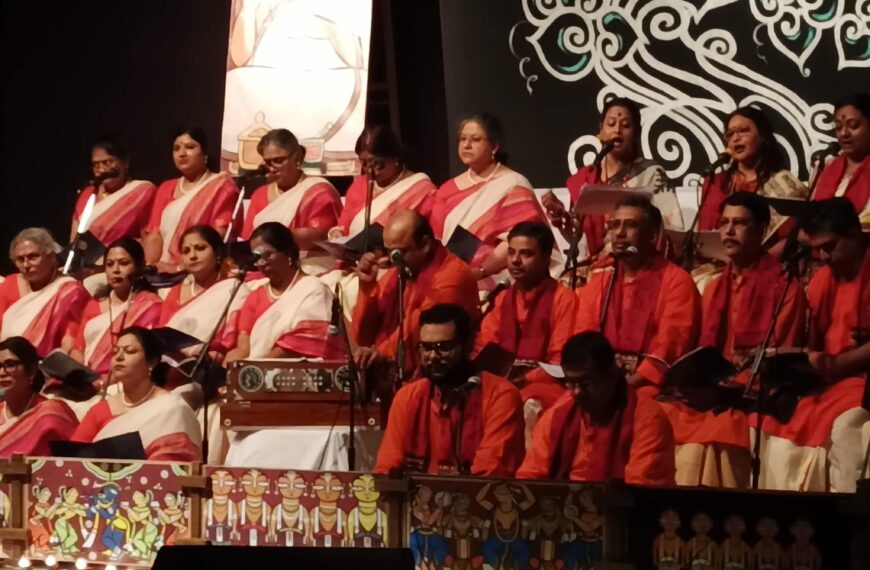
 By
By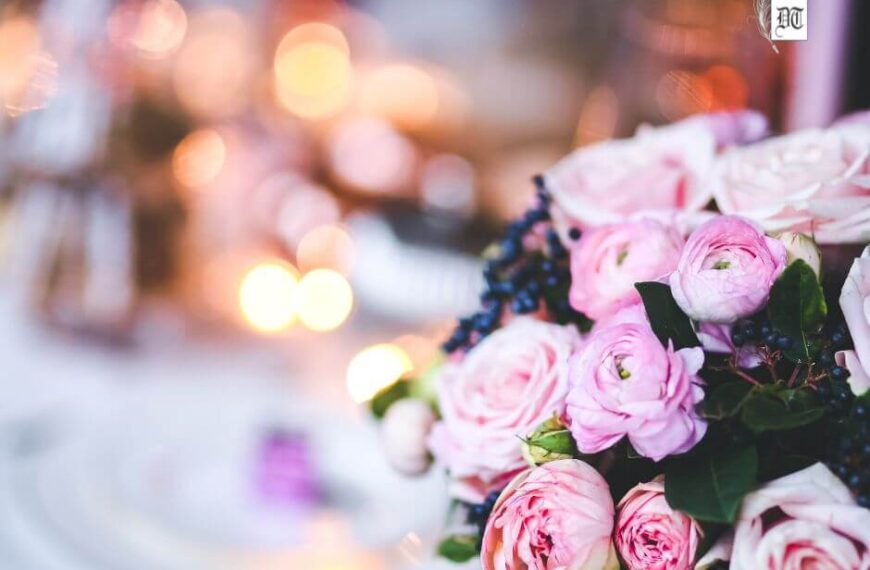
 By
By
 By
By
I thoroughly enjoyed your Jhumar articles. Valuing this tradition for today and its place in the evolution of traditional dance and music in eastern India is important.